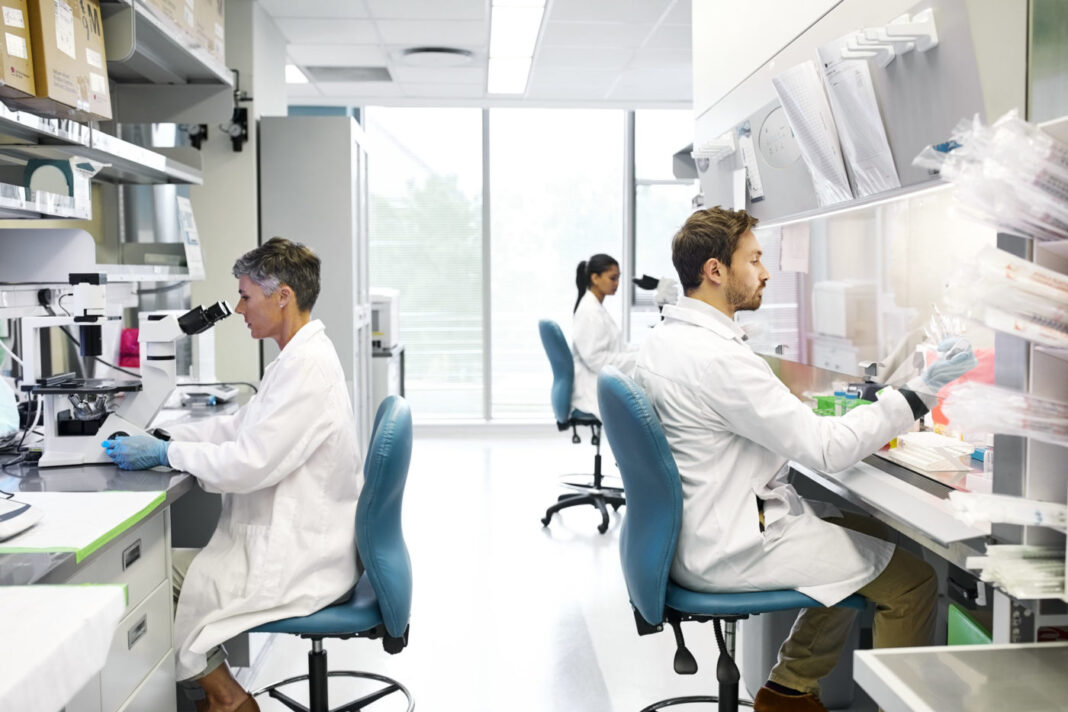Researchers from Arizona State University (ASU) and the European X-ray Free Electron Laser (EuXFEL) research facility in Schenefeld, Germany, published a study “Segmented flow generator for serial crystallography at the European X-ray free electron laser” in Nature Communications that reportedly validated a microfluidic droplet generator for reducing sample size as well as waste (which can be as high as 99%) in ASU’s Serial Femtosecond Crystallography (SFX) experiments.
Using this, they determined the crystal structure of the enzyme 3-Deoxy-d-manno-Octulosonate 8-Phosphate Synthase (KDO8PS) and revealed new detail in a previously undefined loop region of the enzyme which is a potential target for antibiotic studies.
“Serial femtosecond crystallography (SFX) with X-ray free electron lasers (XFELs) allows structure determination of membrane proteins and time-resolved crystallography. Common liquid sample delivery continuously jets the protein crystal suspension into the path of the XFEL, wasting a vast amount of sample due to the pulsed nature of all current XFEL sources. The European XFEL delivers femtosecond (fs) X-ray pulses in trains spaced 100 ms apart whereas pulses within trains are currently separated by 889 ns. Therefore, continuous sample delivery via fast jets wastes >99% of sample,” write the investigators.
“Here, we introduce a microfluidic device delivering crystal laden droplets segmented with an immiscible oil reducing sample waste and demonstrate droplet injection at the EuXFEL compatible with high pressure liquid delivery of an SFX experiment. While achieving ~60% reduction in sample waste, we determine the structure of the enzyme 3-deoxy-D-manno-octulosonate-8-phosphate synthase from microcrystals delivered in droplets revealing distinct structural features not previously reported.”
“We are excited that this work, resulting from a huge collaborative effort, has been well received in the XFEL community,” explains Alexandra Ros, PhD, associate professor in ASU’s School of Molecular Sciences (SMS) and faculty member of the Center for Applied Structural Discovery (CASD) at the Biodesign Institute. “We are further developing this method and are seeking synchronization of the microfluidic droplets with the pulses of XFELs.”
“At this very moment, a small team of ASU students has just finished performing experiments at the Linac Coherent Light Source (LCLS) at the SLAC National Accelerator Laboratory [Menlo Park, CA] to refine the method. There could not have been better timing for the publication of our work.”
EuXFEL generates ultrashort X-ray pulses with a brilliance that is a billion times higher than that of the best conventional X-ray radiation sources, according to Ros. After ten years of construction, it opened for initial experiments in late 2017.
SFX is a technique for protein structure determination, where a liquid stream containing protein crystals is intersected with a high-intensity XFEL beam.
Although the crystals are destroyed by the intense XFEL beam immediately after they have diffracted, the diffraction information can still be recorded thanks to detectors. New data analysis methods have been developed, allowing a team to analyze these diffraction patterns and obtain electron density maps and detailed structural information of proteins.
The method is specifically appealing for hard-to-crystallize proteins, such as membrane proteins, as it yields high-resolution structural information from micro- and even nanocrystals, thus reducing the contribution of crystal defects and avoiding the tedious growth of the large crystals demanded by traditional synchrotron-based crystallography, says Ros.
While crystallography with XFELs has been a powerful technique for unraveling the structures of large protein complexes and also permitting time-resolved crystallography, this cutting-edge science nevertheless engenders a major problem. Because of the small “hit” rate it requires huge amounts of suspended protein, which although not irradiated, are cumbersome to retrieve for most protein samples. As much as 99% of the protein can be wasted.
Herein lies the major technical advance made by her team, claims Ross. They developed a 3D-printed microfluidic device, which is high-resolution, and generates aqueous-in-oil droplets of variable droplet segmentation that can be synchronized to the free electron laser pulses. This dramatically reduces the amount of purified protein needed for the European XFEL experiment from the currently typical (and almost inaccessible) 1 g requirement for full data set recording, Ros explains.
The team of scientists has demonstrated droplet generation of the enzyme KDO8PS crystal suspensions with the microfluidic droplet generator and shown that the droplet generation frequency can be controlled by the rates of the aqueous and oil streams. The diffraction quality of the crystals of KDO8PS is similar both when injected in aqueous droplets surrounded by oil or by continuous injection with a Gas Dynamic Virtual Nozzle (GDVN), with ~60% reduction in sample consumption achieved with droplet injection.
The determined structure revealed new detail in a previously undefined loop region of KDO8PS, a potential target for antibiotic studies. These results advocate for future routine integration of droplet generation by segmented oil flow at other XFELs around the world, says Ros.


